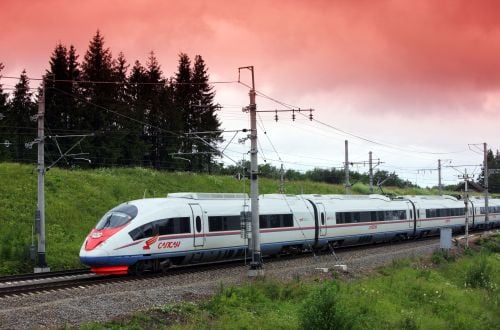“This rail will be suitable for high-speed trains with speeds up to 400 km/h and an axleload of up to 170kN, ordinary 200km/h passenger trains with a 226kN axleload, and special 160km/h container trains with an axleload of up to 210kN,” says Mr Ilya Shirokobrod, vice-president, sales and logistics, with Evraz. “It means that the average axleload will be about 30% higher than on other high-speed lines in the world.”
To support such a high load, Evraz ZSMK has introduced a special method of heat treatment and steel grade. Evraz says the new100m-long rails will be produced with “the highest precision for rail sections and straightness, class E surface quality, higher endurance and crack resistance, and fewer non-metallic inclusions.”
Compared with rails designed for 250km/h lines, the new rails will have 25-50% improved rail section tolerance in nine controlled elements, and will meet 25% stricter requirements for non-metallic inclusions and low hydrogen content in hot steel. The rails will also have increased resistance to low temperatures, with 25% higher impact resilience at temperatures down -60oC, and the rails will be designed to withstand temperature fluctuations from -48 to +67oC.
Evraz ZSMK has improved the rail steel making process by introducing extended secondary treatment and degassing together with a new high-performance pulse-echo UT unit, certified by Russian Railways (RZD), which is able to detect internal flaws in finished rails and final straightening, and can accept the 100m-long rails in the straightening machine. Evraz has also implemented a controlled rolling process at reduced temperatures.
“Technical requirements for new rails will be confirmed by Russian railway authorities by the end of summer, by which time the Evraz facility in Novokuznetsk will be ready to start production,” Shirokobrod says. “А pilot lot will be laid between Moscow and St Petersburg, and its characteristics will be checked during operation.”

